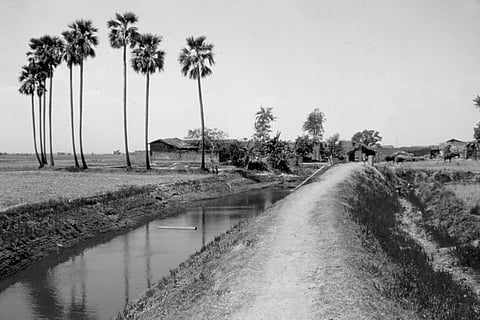
The Ahar-Pyne system is a traditional, nature-based water management method that has supported agriculture in South Bihar for over 2,000 years.
Originating during the Magadh dynasty, it consists of two key components: 'Ahars' which are man-made reservoirs for storing water and 'Pynes' which are diversion channels that carry water from rivers or rain-fed streams into the ahars and nearby fields.
This integrated system allows for efficient water storage and distribution, making it highly suitable for both monsoon and dry seasons.
Ahar-Pyne plays a crucial role in enhancing agricultural productivity.
The water collected in ahars is often nutrient-rich, improving soil fertility and boosting crop yields. It also contributes to flood management by diverting excess rainwater and to drought resilience by storing water for use during dry spells.
Additionally, it supports groundwater recharge, as surplus water from ahars seeps into the soil and replenishes local aquifers.
This system is not only an engineering solution but also a social institution. Its maintenance has traditionally depended on collective community efforts, fostering cooperation and local stewardship. For centuries, it has provided both livelihood and social cohesion in rural Bihar, linking communities through shared dependence on water resources.
In recent years, efforts to revive and modernise the Ahar-Pyne system have gained momentum, especially in districts like Gaya, Nalanda and Kaimur. These initiatives aim to blend traditional knowledge with modern water management practices to address contemporary agricultural and environmental challenges.
The successful rejuvenation of Ahar-Pyne could serve as a model for sustainable water solutions in other water-stressed regions of India.